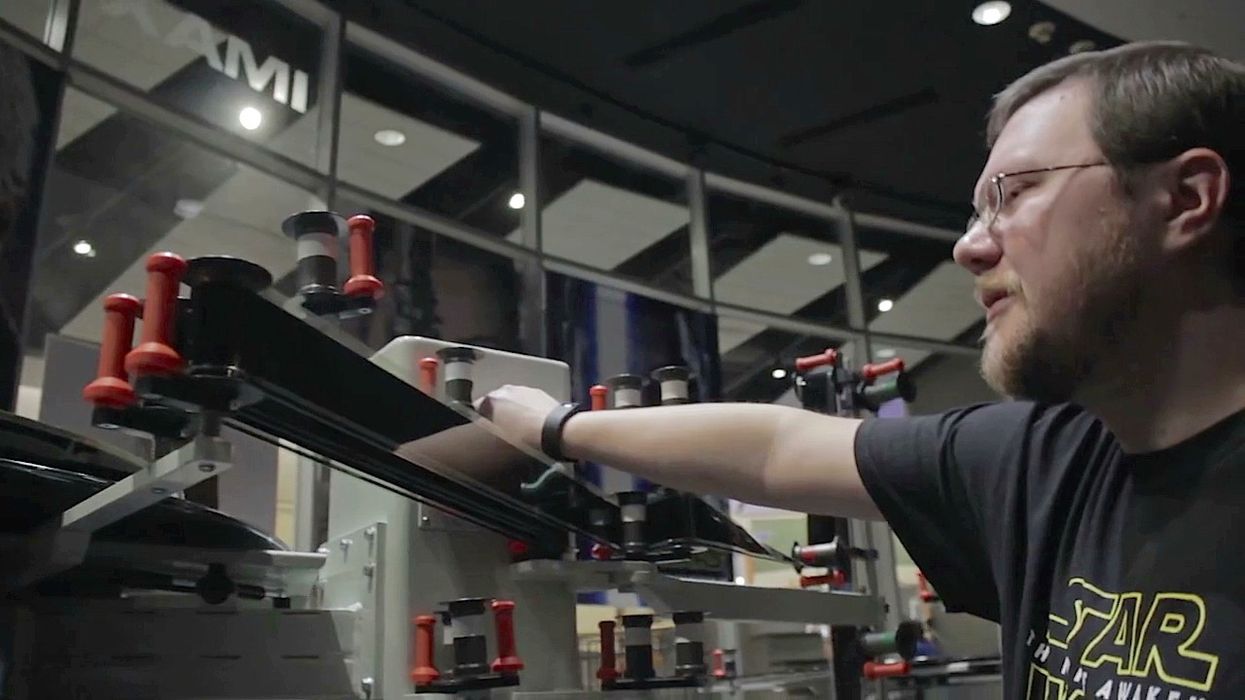Go Inside an IMAX Projector Room to See How 'Star Wars: The Force Awakens' Screens in 70mm
While Star Wars: The Force Awakens was released in thousands of theaters, a special few got to screen it in 70mm IMAX 2D.

Most IMAX theaters that show major motion pictures have now moved to digital (all IMAX 3D showings are digital), but there are a number that will still show standard releases in the giant film format. Though only one scene was shot in IMAX for Star Wars (the chase on Jakku), the entire film was shot on 35mm anamorphic and blown up to 70mm for a handful of theaters around the country. Thanks to Denzale Butler (and projectionists Brian Elmore, Zac Simon, Greg Sanford), we've got a terrific behind the scenes of what it takes to prep a film like The Force Awakens for a 70mm IMAX screening:
It might just be me, but there is something very calming about watching this process and the way Denzale put the video together. If you're looking for a more detailed explanation and walkthrough, he's also posted this video, where Brian explains that it takes weeks of training to become proficient at splicing the reels together and threading the film through the machine correctly:
The Force Awakens was actually shown in 70mm IMAX 2D in two different ways, either at one of the circular dome screens, or on a standard flat screen. Many of the theaters showing Star Wars in 70mm IMAX use the dome screens, like Birmingham, Alabama's McWane Science Center pictured here. Others, like the Lockheed Martin IMAX Theater in Washington, D.C., were showing the print on a flat screen. Here's a little more info on McWane and IMAX film, which is still showing Star Wars two months after it was released:
The John W. Woods IMAX® Dome Theater is an experience like no other! Our 280 seats sit under a 5 story, 79ft. diameter tilted, domed screen. The IMAX® Dome image fills your entire field of vision and the audio surrounds you to create a truly immersive sight and sound film experience.
The IMAX® Dome is a large format, 70mm film projection system that uses legendary IMAX® technology to create amazing images of unsurpassed resolution and impact. Combined with 15,000 watts and six channels of digital surround sound, it is the ultimate movie experience. IMAX® film has the largest film frame in motion picture history – ten times the size of a standard 35mm frame! In just 40 minutes, the projector carries more than 10,000 feet of film at 24 frames per second. Thanks to a glass-enclosed projection room, you can watch as the Projectionist loads the projector and elevates it into position for starting and viewing the show.
The original list of films screening the movie in IMAX 3D and IMAX 2D 70mm can be found here, so if you haven't been able to see the film in IMAX 2D, but still want to, a few of the theaters listed still have plenty of daily showings.
Source: Denzale Butler












